The Owl in the Rafters – The Tsugumi Ohba Conspiracy
As many of you may already know, October 2nd marked the debut episode of the animated adaptation of one of JUMP’s top selling shonen manga and one of the most anticipated titles in anime this Fall season: Bakuman, not to be confused with Bakugan Battle Brawlers. For those not familiar with Bakuman, the name is derived from the first kanji of two different Japanese words: Bakuchi, for “gambling” and Manga, making the title translatable into something along the lines of “Manga Gambler” or “Gambling with Manga”.
Bakuman is the latest ongoing serialized title by the artist+author duo Takeshi Obata and Tsugumi Ohba. This pair of names ought to sound familiar to many of you because their christening manga series was none other than the overwhelmingly popular and controversial Death Note.
A quick up-to-speed for those who didn’t hop on board the Death Note bandwagon when it was still running strong and fresh in everyone’s minds, the story follows the protagonist, Light Yagami who is a brilliant young high school student living a normal life in Tokyo, Japan. That is, a normal life until he happens upon the titular black notebook. Inside the cover of the notebook Light finds a set of basic instructions starting with: if you write the name of a person in this notebook, they will die. Light, being the upstanding and moral young man that he is takes the noble burden upon himself to rid the world of evil. His idealistic good intent, however, goes sour as he systematically kills off criminals from afar using the Death Note. But the world may not be doomed to a future of instant death enforced law as the world’s greatest modern detective steps forward to challenge the unseen force killing off the world’s criminals. Two genius minds face off with the Death Note as the hinging piece of evidence to be used or concealed for or against Light’s cause.
What made Death Note such a huge hit was the way it played with the established system of the shounen demographic. It had the normal boy granted fantastic powers, but with a grim twist. It had the rival character and even the obligatory unrequited love interest, but all with a subtle and unique twist unlike the stock and standard of most fantasy and battle manga. If we really want to push the definitions, the shinigami, Ryukk can even qualify as the mascot character. The controversy of course came about from the subject of killing people. Sure, people die in shounen all the time, people get hurt and heroes exact justice on criminals, but never in quite a chillingly real world sort of setting. There have been issues worldwide of children bringing replica Death Note notebooks into schools and filling them with the names of people they don’t like. Before this turns into a Death Note review however, I’d like to point your attention back to the names I brought up earlier: Takeshi Obata and Tsugumi Ohba.
Takeshi Obata, as I have mentioned before in my review of Rurouni Kenshin author/artist, Nobuhiro Watsuki, is a famous artist within the manga industry with a long established history of success to his name, and a notably flexible art style that can bend to either side of cartoony-vs-realistic in extremes. Obata has been an influence, role-model, and mentor to many of the manga artists who became popular during the mid-late 90s and early 2000s, including Kentarou Yabuki, Nobuhiro Watsuki and Yusuke Murata.
Tsugumi Ohba however is a different story. Ohba’s big debut onto the scene of the anime/manga industry was Death Note whose widespread popularity spawned an anime, a film series, several videogames, a light novel and an endless stream of paraphernalia. A good omen, one would think, for a first-time author partnered with a popular and well respected artist that lead to a top-selling hit. More than that, in just 2 years following Death Note’s completion, they have another serialized title up and running in JUMP with top ratings.
This says a lot about the sensational popularity and staying power of the impression Death Note left on readers. For those of you out there in competitive fields of art and/or writing, I’m sure you can understand the kind of luck and talent it takes to be a consistent hit. For a first-time author in JUMP to stumble into this kind of success seems too good to be true, and in fact it is.
There is but one huge hole in this rookie success story, and that is the fact that Tsugumi Ohba is no newcomer to the manga industry and is no newcomer to Shueisha’s Shonen JUMP. He may not have written anything in JUMP before Death Note but in other popular magazines in Japan… he actually hadn’t written any manga. When we look at his history with light novels we find Ohba’s name on… nothing. Perhaps he wrote for Visual Novels, or videogames? No. How about television or film, then? Wrong, again. That’s right, after attempting to run a background check on Tsugumi Ohba’s career, the name turns up no results: none at all. No, not even a high school or university record of writing contests entered and/or won.
So the truth becomes clear: a man calling himself Tsugumi Ohba waltzed into the editorial offices of JUMP from out of nowhere, with famous manga artist, Takeshi Obata in stride, and together the two swept the offices with a hit publication that rocked the magazine, shounen demographic and anime industry as a whole for 3 years. Notice now just how absurd and suspicious the story seems?
The hunt started for many of us following Death Note during its initial publication and for those of us keeping a watchful eye over the promising talent of the industry. For a stranger to appear so suddenly and showcase such a phenomenal sense of style and genre savvy writing in a first-time title seemed unusual. As Death Note ran on in its publication and its popularity skyrocketed, it became clear that despite being the author of a hit series and the subject of a good number of interviews over a couple of years, Tsugumi Ohba’s known biography still amounted to nothing: no date of birth, nor general age, no home town, no history. Nothing. The conclusion from there was simple: “Tsugumi Ohba” had to be a pen name.
“But why?” was now the question. Who could be the face behind the proverbial mask, and why hide his identity? We were left with just one singular hint. In the very first chapter of Death Note, tucked into a single corner panel, read the title “GAMO SEMINAR,” the name of Light Yagami’s prep school. It is a common trend in manga for schools to be named after the creator, and going on this hint, one man was put into the searchlight, Hiroshi Gamo.
I’m sure this name holds little significance to most of you, as Gamo’s work never really hit the states, even during the height of his popularity. In fact, Gamo only ever had one hit title, a gag series that ran in the weekly JUMP for four years, starting in 1993, called Tottemo! Luckyman. (Literally: Incredibly! Luckyman.) The premise of the series was that protagonist, Yoichi Tsuitenai, was a boy with the worst of luck, so unlucky in fact that one day he was hit and killed by a UFO that came crashing to Earth. He was revived however, by the power of a cosmic hero known as Luckyman. The two beings fused together, and so when trouble calls, Yoichi transforms into Luckyman in order to defend the Earth using his incredible powers of luck. Blessed by the powers of the LuckyStar, Luckyman’s impossibly good luck always manages to turn his slow and clumsy punches into tornadoes of deadly coincidences that vanquish his enemies for him. Accompanied by his sidekick, Douryokuman (lit. Effortman) the two defend the Earth from an impending alien invasion.
While the manga was a hit with kids, and managed to spawn a 50-episode anime series that aired in 1994, once Luckyman’s run in JUMP ended in 1997 so did his success with JUMP. Gamo submitted various one-shots, eventually getting another serial, which was promptly canceled within the first few months.
Now, you may think it strange and perhaps entirely unlikely that the author of a children’s superhero comedy could be the mind behind the gothic and morally-challenging story of Death Note, and certainly there were many skeptics of this theory that Hiroshi Gamo and Tsugumi Ohba are one and the same. Those skeptics were swept away in great numbers however, after Bakuman began publication.
Two years following the end of Death Note’s publication in JUMP, the Obata+Ohba duo were back in the weekly JUMP with a new hit title. Unlike the dark and brooding styling’s of Death Note however, this new title, Bakuman carried itself on a much higher note and played to a much brighter subject. As with the clever manipulation of the shounen clichés in Death Note, Ohba made a point of making a shounen title from what wouldn’t seem like shounen material.
Young Mashiro Moritaka is your normal average high school student, with no particular ambitions in life, and no drive or passion over anything in particular. Mashiro’s one talent is his ability to draw fairly well, a talent inherited from his late uncle, a manga artist/author. But the same can’t be said for Mashiro’s classmate, Takagi Akito. Despite being the top student in the school and a talented writer, Takagi’s dream job isn’t to make a lot of money working for a big respectable company, nor is it to write award-winning novels. Takagi’s dream is the write manga that people can enjoy, but he’s a lousy artist, so to make his dream come true, he wants the help of his classmate Mashiro in making a hit manga series. The story follows the two not only through their creative process in a wonderfully inspiring down-to-earth kind of way, but it takes the reader inside the editorial offices of Shueisha’s manga giant, JUMP, and addresses the many obstacles, perils, and the red tape that needs to be hurdled in order to get a running title published. So far, Bakuman has been praised as a refreshing concept that puts the many talented authors and artists of Shounen JUMP and their day-to-day struggles in the spotlight, giving them the recognition they deserve.
Getting back to the original point however, I did mention that Bakuman managed to sweep away most of the reluctance people felt buying into the Gamo theory. You see, in chapter 1, and subsequently episode 1, of Bakuman, Mashiro’s uncle is described as being the author of a one-hit wonder manga turned anime: a super hero comedy series called Super Hero Legend. I’m sure you’re beginning to see where this is headed. Not only is the concept similar, but even the drawings of Super Hero Legend are very clear references to the art style of Hiroshi Gamo. The first episode of the Bakuman anime even opens to an amusing false OP for Super Hero Legend.
Apart from the fun of playing detective and unmasking the mysterious author, there is a fair amount of significance to the theory that Tsugumi Ohba is Hiroshi Gamo working behind a pen name. While this all is still technically only a theory, up in the air for speculation and argument, the possibility that Gamo, a one-hit-wonder author with a long record of unrecognized work and effort is working with Obata, a well established artist with an anthology of different successes, lends itself to Bakuman’s credibility as a fair look at the inner workings of the manga business, from the eyes of both a celebrity artist and a struggling underdog. And there is most definitely something to be said for Gamo’s persistence and accumulated experience finally paying off.



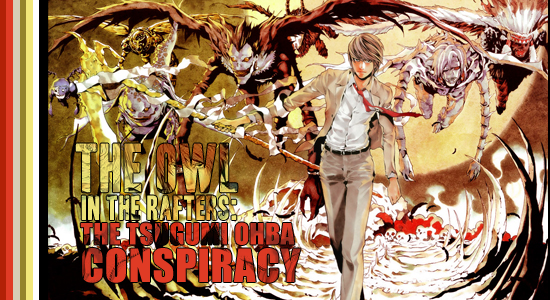


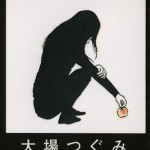

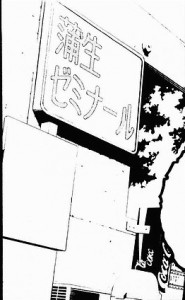
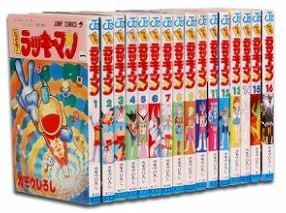
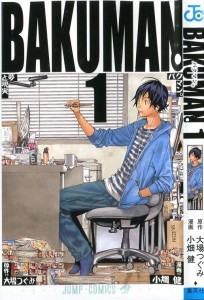

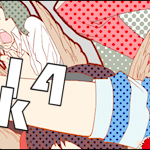

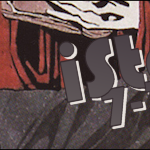









Okay, so I am totally beyond sleepy, but I skimmed through this and it looks like a good read. I’m gonna attempt it again when I’m not seeing double! XD
I think it’s interesting to know about the duo behind Death Note. I didn’t really know much about either author. Though by the end it seemed like I was playing Clue, so sort of unique to know someone doesn’t want all that spotlight despite working hard for it.
I didn’t even realise it debuted on my birthday, but whatever. It certainly looks to be a good show with very interesting characters. As well as anything, it does provide a look into the whole manga industry, which is rare in itself.
I certainly hope to see more soon!
Excuse me, but Tsugumi Ohba is a woman. She really likes cute animals.
Shueisha refuses to confirm or deny any speculation regarding Ohba’s identity. Shueisha also releases no information on their own. The only comments regarding Ohba’s personality have been made by him/her in brief freetalk sections of his/her manga.
That being the case, there has been no confirmation of Ohba’s gender one way or the other to the best of my knowledge. Of course, it’s always possible I missed some statement saying otherwise, but unless someone can produce solid proof to back that claim, your guess is as good as mine.